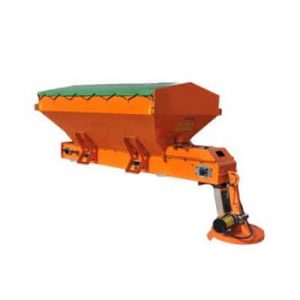Green Transportation: Exploring The Potential Of Wind-Powered Trains

Table of Contents
The Environmental Benefits of Wind-Powered Trains
Wind-powered trains offer significant environmental advantages over conventional rail systems. The shift to renewable energy sources is crucial in mitigating climate change, and wind power plays a vital role.
Reduced Carbon Footprint
Switching to wind-powered trains dramatically reduces greenhouse gas emissions.
- Quantifiable data: Studies suggest that wind-powered trains could reduce CO2 emissions by up to 90% compared to diesel trains and significantly lower emissions compared to electric trains powered by fossil fuel-generated electricity.
- Comparison: Unlike diesel trains, which directly release harmful pollutants, and electric trains dependent on potentially dirty energy sources, wind-powered trains offer a clean, emissions-free solution for long-distance travel.
- Air quality benefits: The reduction in air pollution contributes to improved air quality in areas along railway lines, benefiting both human health and the environment.
Renewable Energy Source
Wind-powered trains harness the power of a clean, sustainable energy source.
- Direct power or battery charging: Wind turbines can either directly power the trains or charge onboard batteries, providing a continuous energy supply.
- Energy storage solutions: Advanced battery technologies and other energy storage solutions are crucial to address the intermittent nature of wind power, ensuring consistent train operation. This includes exploring options like pumped hydro storage or compressed air energy storage.
- Advantages over other renewables: While solar power is another renewable option, wind power offers a more consistent and reliable energy source, especially in areas with less direct sunlight.
Noise Reduction
Wind-powered trains also hold the potential for reduced noise pollution.
- Noise level comparison: While the exact noise reduction will depend on the specific design, wind-powered trains are expected to generate less noise than traditional trains, particularly those powered by diesel engines.
- Community benefits: Quieter operation significantly improves the quality of life for communities located near railway lines, reducing noise-related stress and health problems.
- Quieter operation: The absence of loud engines and the inherent quiet operation of electric motors significantly decrease the overall noise pollution associated with railway transport.
Technological Feasibility and Challenges of Wind-Powered Trains
While the concept of wind-powered trains is compelling, several technological challenges must be addressed.
Current Technological Advancements
Significant advancements in wind turbine technology are paving the way for their integration into rail systems.
- Specific technologies: Lightweight, high-efficiency wind turbines specifically designed for rail applications are currently under development.
- Integration examples: Similar principles are already seen in other applications, such as wind-powered ships and remote power generation systems.
- Research and development: Ongoing research and development efforts are focused on improving the efficiency, reliability, and durability of wind turbines for railway integration.
Energy Storage and Management
The intermittent nature of wind power necessitates robust energy storage and management systems.
- Battery technologies: Advanced battery technologies, such as lithium-ion batteries, are crucial for storing excess energy during periods of high wind and supplying power during lulls.
- Alternative energy storage: Research into other energy storage methods, such as flywheels or supercapacitors, is also exploring options to enhance the reliability of wind-powered trains.
- Energy fluctuation management: Sophisticated energy management systems are needed to effectively balance energy supply and demand, ensuring consistent train operation.
Infrastructure Requirements
Adapting existing railway infrastructure to accommodate wind-powered trains presents logistical challenges.
- Railway line modifications: Modifications to railway lines may be required to integrate wind turbines and accommodate the added weight and size of the wind-powered train system.
- Wind farm integration: Strategic placement of wind farms along railway lines is essential to maximize energy capture and minimize transmission losses.
- Costs and logistics: The initial investment in infrastructure upgrades and wind turbine installation will be substantial, demanding careful planning and resource allocation.
Economic Considerations and Viability of Wind-Powered Trains
The economic feasibility of wind-powered trains requires a thorough cost-benefit analysis.
Cost-Benefit Analysis
While the initial investment is high, long-term operational savings and environmental benefits offset the costs.
- Cost comparison: While the upfront cost of implementing wind-powered trains is higher than traditional systems, the long-term operational savings from reduced fuel consumption are substantial.
- Fuel savings: Eliminating the reliance on fossil fuels results in significant long-term savings on fuel costs.
- Return on investment: A comprehensive cost-benefit analysis considering environmental benefits, reduced maintenance, and fuel savings is crucial to determine the overall return on investment.
Potential Economic Growth and Job Creation
The development and deployment of wind-powered train technology stimulate economic growth and job creation.
- Manufacturing and maintenance jobs: The manufacturing, installation, and maintenance of wind turbines and associated infrastructure create numerous employment opportunities.
- Research and development: Continued research and development in this field will further stimulate economic activity and innovation.
- Economic ripple effects: The adoption of wind-powered trains will have a positive ripple effect on related industries, such as renewable energy manufacturing and engineering.
Government Policies and Incentives
Government policies and incentives play a vital role in accelerating the adoption of wind-powered train technology.
- Subsidies and tax breaks: Government subsidies and tax breaks can make wind-powered train projects more financially viable.
- Regulatory support: Streamlined regulatory processes and supportive policies are essential to facilitate the deployment of this green technology.
- Successful initiatives: Examining successful government initiatives supporting renewable energy adoption in other sectors can inform strategies for promoting wind-powered trains.
Conclusion
Wind-powered trains offer a compelling vision for sustainable transportation. While technological and economic challenges exist, the environmental benefits and potential for economic growth make them a worthy pursuit. The reduced carbon footprint, reliance on renewable energy, and potential for noise reduction represent a significant step towards a greener future. To learn more about wind-powered train technology and support initiatives promoting sustainable wind-powered trains, explore resources from organizations dedicated to green transportation and renewable energy. Let's invest in the future of wind-powered trains and build a more sustainable world.

Featured Posts
-
 Tensions Escalate Tory Chairmans Confrontation With Reform Uk On Populism
May 03, 2025
Tensions Escalate Tory Chairmans Confrontation With Reform Uk On Populism
May 03, 2025 -
 Tulsa Winter Road Readiness 66 Salt Spreaders In Action
May 03, 2025
Tulsa Winter Road Readiness 66 Salt Spreaders In Action
May 03, 2025 -
 Cangkang Telur Sumber Nutrisi Alami Untuk Pertumbuhan Tanaman Dan Kesehatan Hewan
May 03, 2025
Cangkang Telur Sumber Nutrisi Alami Untuk Pertumbuhan Tanaman Dan Kesehatan Hewan
May 03, 2025 -
 Christina Aguileras Photoshopped Photos Fans React To Unrecognizable Images
May 03, 2025
Christina Aguileras Photoshopped Photos Fans React To Unrecognizable Images
May 03, 2025 -
 Emmanuel Macron Pression Accrue Sur Moscou Attendue
May 03, 2025
Emmanuel Macron Pression Accrue Sur Moscou Attendue
May 03, 2025
